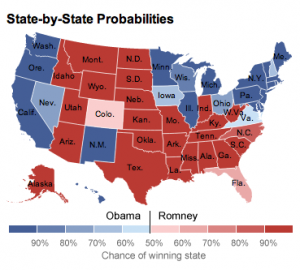A story in Stuff about the benefits of ginger is to be commended for providing actual links to their supporting evidence for some of the claims (assuming you want more evidence than the approval of Confucius).
Unfortunately, if you provide links, there’s always the risk that people will follow them:
rich in antioxidants. The linked paper describes chemical measurements of the antioxidant effects of ginger. The abstract doesn’t support “rich” — the chemical analysis was of the antioxidant strength, not the concentrations of antioxidants and, at least in the abstract, didn’t compare to anything else (the journal, unusually, isn’t one that UoA library has access to).
combats nausea: This one appears to actually be true — it’s a combination of six randomised trials, and found ginger was better than placebo. The researchers did note that publication bias was a concern and said the data are insufficient to draw firm conclusions.
natural pain relief. The link here says that the result comes from the US National Library of Medicine. That’s only true to the extent that it’s stored on their virtual shelves, like everything else published in biology and medicine. The study (by some Iranian scientists publishing in the Journal of Alternative and Complementary Medicine) compared ginger to two medications for period pain and didn’t find a statistically significant difference. The researchers concluded that ginger was as effective, but their data don’t actually support this conclusion: you can’t conclude equivalence just from a lack of statistical signifiance. If you look at the data in their Table 2 (which you can’t, since it’s not open-access), you can compute a 95% confidence interval for the difference in proportion of women who reported that the treatment helped: ibuprofen could have been 23 percentage points better than ginger, which is hardly a convincing demonstration of equivalence.
There’s also a link to some (then) unpublished research from the University of Sydney showing that chemicals in ginger inhibit the inflammation-related enzymes COX-1 and COX-2. This link is from 2001 — I noticed how old it was because the researcher was talking enthusiastically about selectively inhibiting COX-2. As Vioxx did. He said that he planned to do a study in actual patients. Nothing seems to have come of this study in the past decade: either it wasn’t done or it has succumbed to publication bias.
Natural arthritis relief.From the conclusion section of the linked abstract “Due to a paucity of well-conducted trials, evidence of the efficacy of Z. officinale to treat pain remains insufficient. However, the available data provide tentative support for the anti-inflammatory role of Z. officinale constituents,”
Stress reducer: The first link is to the Daily Mail. Enough said. The second link is introduced as “Ginger extract showed “significant antidepressant activity” in a study that was published in the International Research Journal of Pharmacy.” A study in rats, if you follow the link.
Anti-inflammatory: In test-tubes, ginger extracts inhibit some things related to inflammation. The abstract of the linked study concludes “Identification of the molecular targets of individual ginger constituents provides an opportunity to optimize and standardize ginger products with respect to their effects on specific biomarkers of inflammation. Such preparations will be useful for studies in experimental animals and humans.” In other words, we don’t know whether this translates to benefits in mice, let alone in people.
Antibiotic: This was the one that provoked me to write this post. The story says “Ginger was more effective than antibiotic drugs in fighting two bacterial staph infections”. The research says that high concentrations of ginger extract inhibited bacteria growing in a dish in lab more than low doses of antibiotics. No “infections” were involved in the research.
Common colds: The story says “Ginger contains almost a dozen anti-viral compounds and scientists have identified several that can fight the most common cold virus, the rhinoviruses.” The linked research doesn’t mention rhinoviruses, or any other kind of virus. It’s a lab study of four types of bacteria.
Aids digestion: specifically, stimulates production of stomach acid and speeds emptying of the stomach. The stomach-emptying is apparently true. No link is given for the stomach acid increase, but a Google search finds lots of web sites telling you how ginger can reduce stomach acid and help with gastric reflux.
Fights diabetes: The story says “Ginger can help to manage blood sugar levels in long-term diabetic patients”. The research says “one fraction of the extract was the most effective in reproducing the increase in glucose uptake by the whole extract in muscle cells grown in culture.” and “It is hoped that these promising results for managing blood glucose levels can be examined further in human clinical trials,” So, again, this is lab bench research, not involving actual diabetic patients.
Boosts circulation: Ginger extracts inhibit blood clotting and platelet aggregation in blood samples in test-tubes.
So, we have one passing grade on nausea, and a partial pass on aiding digestion. Two of the links provided absolutely no support for the claims, and the rest were mostly test-tube or rat research that might in the future lead to human research that might support the claims.

